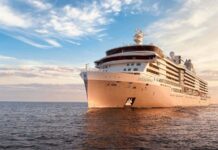The first delivery of the new pan-European wide-body Airbus A300B2 happened on May 10, 1974, when the aircraft bearing serial number 005 was taken over by Air France.
This was about one and a half years after the aircraft’s first flight on October 28, 1972. On May 23, 1974, Air France premiered the huge airliner on its trunk route from Paris to London-Heathrow and back. Flying two round-trips demonstrated that this was actually a kind of “bus service in the air” on high-density, short-haul routes between these two major capitals, a distance of fewer than 350 kilometres.
Subscribe to the Airlineratings.com newsletter to get the relevant news first
Virgin Australia’s amazing middle-seat lottery
Easyjet brings back the Fearless Flyer course
Almost a decade later, on March 25, 1983, Airbus delivered the first aircraft of the shorter A310 to Swissair. In total, 816 of these two earliest models of the European aircraft maker were built over the next twenty-plus years, gaining the Europeans valuable experience and firmly placing them on the map of global aircraft suppliers.
On July 12, 2007, the last-ever aircraft of the A300/A310 series was delivered when FedEx took the final A300-600F, MSN 878, the 561st and ultimate A300 built came in the package freighter version of which FedEx had been the launch customer.
The video below was made to celebrate Airbus’s 40th year
Fast forward to today, Pascal Vialleton, Head of the A300/A310 programme, has a lot on his hands.
“The A300 is still key to freighter operations for companies such as FedEx, UPS and DHL. In 2021 it was the third most flown freighter model globally behind the Boeing 757 and 767. There is currently no plan for replacement,” Vialleton tells Airlineratings.com
The number of A300/A310s still active is surprisingly high. Airbus lists 229 A300s as in operation, and of these “39 are stored and about 180 still see regular flights,” says Vialleton. In all 26 aircraft of the first B2/B4 series from the 1970s still exist, among them two B2s that are the oldest active Airbus jets anywhere.
While stored in Tehran since late 2020 according to some online platforms, Airbus counts the A300B2 numbered MSN 80 and registered EP-IBS as the oldest one “in service”, originally delivered in April 1980 to Iran Air and still considered part of its fleet.
Iran, suffering most of the last decade under Western embargoes, often has no other choice than to stick to what it has. “As Airbus is fully complying with the embargo we have only very little and limited information about these aircraft,” says Vialleton.
The oldest aircraft officially monitored by Airbus as still flying is A300B4, MSN 141, originally delivered to Thai Airways in May 1981, converted to a freighter flying for DHL in 1999 and currently operated by Aerostan from Kyrgyzstan, registered EX-30002.
According to airfleets.net there is an even older sister ship still active in Kyrgyzstan, delivered in January 1981. According to Airbus, a total of 28 A300s are still configured to carry passengers, among them mostly A300-600s built in the 1980s, many of them ex-Lufthansa aircraft flying airline services in Iran today.
One of these aircraft built in 1987 has amassed the highest number of flight hours (over 77,000) and cycles (about 37,000, one cycle is one takeoff and one landing) – figures beyond the original Structural Design Service Goal (DSG), set at 34,000 cycles/70,700 flight hours (whichever comes first) for the A300B4, while it was less for the A300-600 (30,000 cycles/67,500 flights). But not to worry – for the A300-600 it can even be extended twice, ultimately to 51,000 cycles or 89,000 hours.
“It is a very robust aircraft and from what we hear from operators we will see it flying well into the 2030s,” says Pascal Vialleton. The average age of the entire existing fleet of A300/A310s is 28 years and there are in total 38 operators using it currently.
The main task for this fleet of veteran Airbuses is working as freighters for courier services, indicated by the average performance of 500 cycles/878 hours of flight per aircraft per year, documenting an average flight duration of fewer than two hours.
Interestingly, the Airbus outsize freighter Beluga ST, based on the A300-600, has just received its certification for ETOPS 180 flights as Airbus starts to offer its outsize cargo capacity in the commercial market and needs the capability to cross the Atlantic delivering satellites to Cape Canaveral, for example.
After half a century in the air, it’s not the end of the line yet for the original European airliner concept that first flew half a century ago and would propel its makers to the very top of the world’s aircraft makers.
























